On our trip up to Alaska, our only route only thanks to Covid border closures, was to travel by water. We were happy to find that the Alaska Marine Highway System would allow us to stow our vehicle, bring Ares, and save us a lot of driving to boot. There are several helpful blog and YouTube posts out there, as well as the Ferry’s webpage which we used when deciding on the specifics of our booking…
On our trip up to Alaska our only route option, thanks to Covid border closures, was to travel by water. We were happy to find that the Alaska Marine Highway System would allow us to stow our vehicle bring Ares with us, and save us a lot of driving to boot. There are several helpful blog posts and YouTube videos out there, as well as the Ferry’s webpage which we used when deciding on the specifics of our booking. I also wanted to create our own post to share some things we found useful when planning our trip. The plan is to make two posts about our time on this ferry, this one being more informational for anyone looking to take the ferry themselves, and the other being more about the great adventure the ferry was!
The Nitty Gritty
There are multiple ship and route options when taking the ferry. We chose to leave from Bellingham, WA, on the vessel the M.V. Kennicott, which took a 5 day route that ended in Ketchikan, AK. The Alaska Maine Highway System has five different ships that offer passage from the mainland USA to Alaska, and other smaller boats that offer day trips. Each ship has different accommodations onboard. Be sure to look at the different ship options when you book your trip to see what is available onboard. TIP – Sometime the ferry offers special fares, like pay for a vehicle and passengers travel free, be sure to check their FB page before booking!
Lodging Onboard the Ship
When you book your trip, you must select the number of passengers in your group first. After you do this you are able to add a cabin to the reservation. You are given three options, all at different price points for this. The ferry does not require you to book a cabin. If you choose not to do this there are several enclosed rooms, as well as areas of open deck, with stacks of chaise lounge chairs, or space to set up a small tent in where you can choose to stay. As our trip was early in the year and we anticipated pretty chilly conditions, we chose to book the smallest cabin option. Only the largest cabins have private bathrooms, but we found that the shared restrooms and showers that were on each floor were never too busy. The Kennicott, which was the ferry available for our travel dates also offered free washers and dryers in the restrooms, which was very nice after the limited laundry we’d done on the drive to Washington. TIP – if you plan to wash clothes onboard bring detergent pods and dryer sheets, everything is twice as expensive once you’re onboard.
Pets on the Ferry
Before we even boarded the ferry there was some groundwork we had to do to be able to travel with Ares. We took him to the vet about a month before our trip and asked for a Certificate of Health which was required for him to board the ship. We also asked for a list of his vaccines and made sure that everything was up to date.
The cost to travel with a pet is $40 per pet. Pets on board the ferry are required to stay on the car deck. If you are traveling with a vehicle on the ferry, you can keep the pet(s) in your vehicle. The car deck was drafty, and noisy, so we opted to block off the back seat of the truck and let Ares stay in the car. You are allowed to go down to care for your pets three times a day, once every eight hours, for about 15 minutes. During this time your pet can be walked around the car deck and has to do their business on the concrete floor. You are provided with cleaning supplies and paper towels to clean up after your pet with.
We quickly found out that the long times alone, and the noises of the other dogs barking and whining stressed Ares out, he refused to eat or defecate for the first couple days on board. On day three we went downstairs during our allotted time to find that he had absolutely destroyed the backseat, poop, pee, and vomit were allover the seat cover, and he was cowered in the corner of the car. We pulled his cage out from the vehicle, and set him up in a slightly less noisy corner with blankets over the cage for insulation. Throughout the rest of the trip he continued to have a decreased appetite and stomach issues, and was probably the happiest of all of us to see land when the trip was over. The ferry steward very kindly gave us extra time and supplies to clean our backseat, and we took the truck to a professional cleaning service when we arrived in Alaska.
NOTE – We did anticipate that Ares would be stressed during our trip, and per our vets recommendation, we tried an appropriate dose of Benadryl, and CBD infused dog treats to ease his anxiety, but neither of these options seemed to help. If we ever took the ferry again we would probably look for options to fly him out instead of having him stay on the ferry with us, however, some pets onboard seemed to fare just fine.
Taking a Vehicle on the Ferry
Taking our vehicle on the ferry was the most expensive part of the trip for us. Vehicles are priced per foot. You should book as far as possible in advance if you’re planning to take a car with you as space is limited in the car deck. I estimate that we paid about $100 per foot for our roughly 19 foot Tacoma. It was nice to be able to go down to the car deck during the pet calls, and resupply with food and clothes when we needed to, so that we did not have to keep enough supplies for the whole trip in our small room. Some people who travel to Alaska opt to save the money you pay to take your car on the ferry and instead purchase a vehicle once there. However, vehicles in Alaska tend to be well used, and often have rust issues due to the huge amounts of snow and salt on the roads.For us, it was worth it to pay the ferry price to have our vehicle with us when we arrived. If the road through Canada had been open at the time we made the trip, we would have taken this route instead to save on transportation costs.
Food on the Ferry
One thing we wished that we would have done differently is how we ate on the ferry. We brought a limited supply of snacks and dry goods, but relied on the ferry’s dining services for our meals over the 5 days. We found the food to be expensive, and sub par for the price. Meals ran about $15 per person, and most of the meats and fish tasted like they were stored frozen. Portion sizes were also small for meals. I wish we had prepared food for the trip the same way we would prep for a backpacking trip, with dehydrated meals, and enough snacks for the whole trip. This would have saved us money, while still being about as tasty as the food onboard. The ferry does offer free hot water, and a microwave passengers can use, and we saw a number of people use these options to prepare meals they brought. One bright spot is that we discovered that the coin operated coffee machine onboard dispensed free espresso shots, needless to say we drank a lot of espresso while watching the amazing scenery from the dining room windows. TIP – The ferry sells Kureig coffee pods, but it is free to use the onboard Kureig machine. Bring your own pods with you, and you’re set!
Total Cost
The final cost for us to take the ferry ended up being around $4,000. This covered the per person cost, lodging, the pet fee, and the cost to transport our vehicle.
See our other post about the Alaska Ferry for more details on our trip, and what there is to do onboard the boat.
(Informational images taken from the Alaska DOT webpage that is linked in this post)
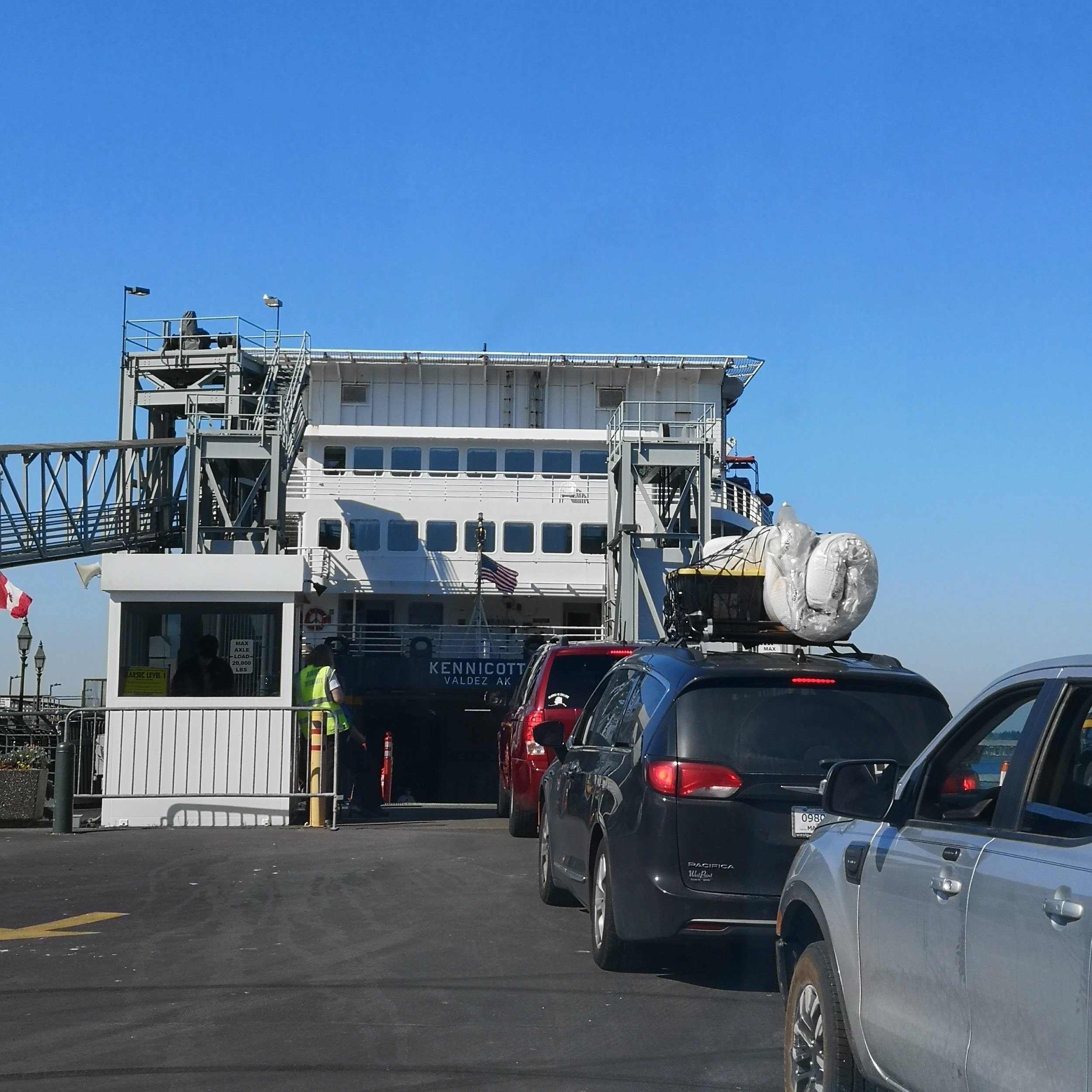
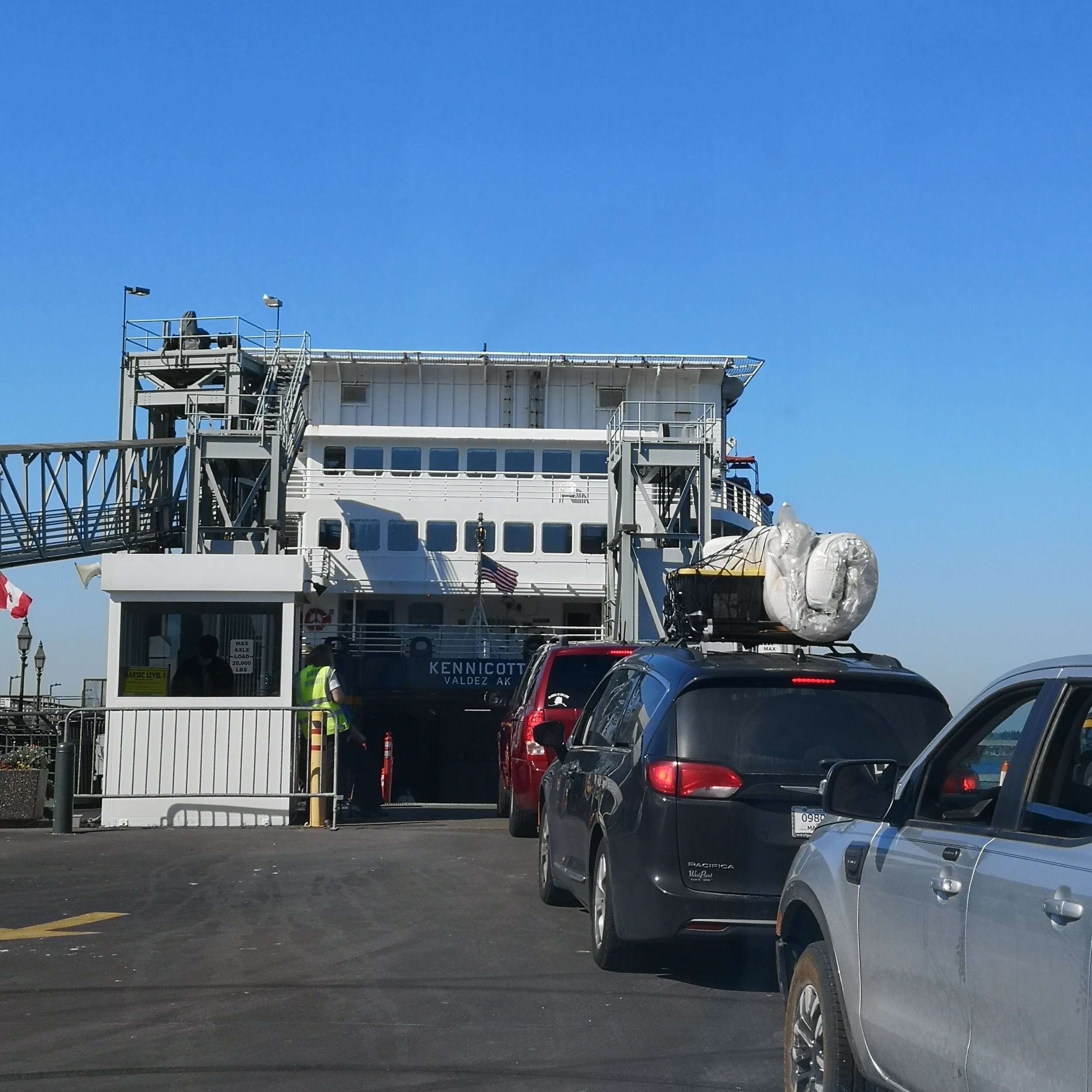
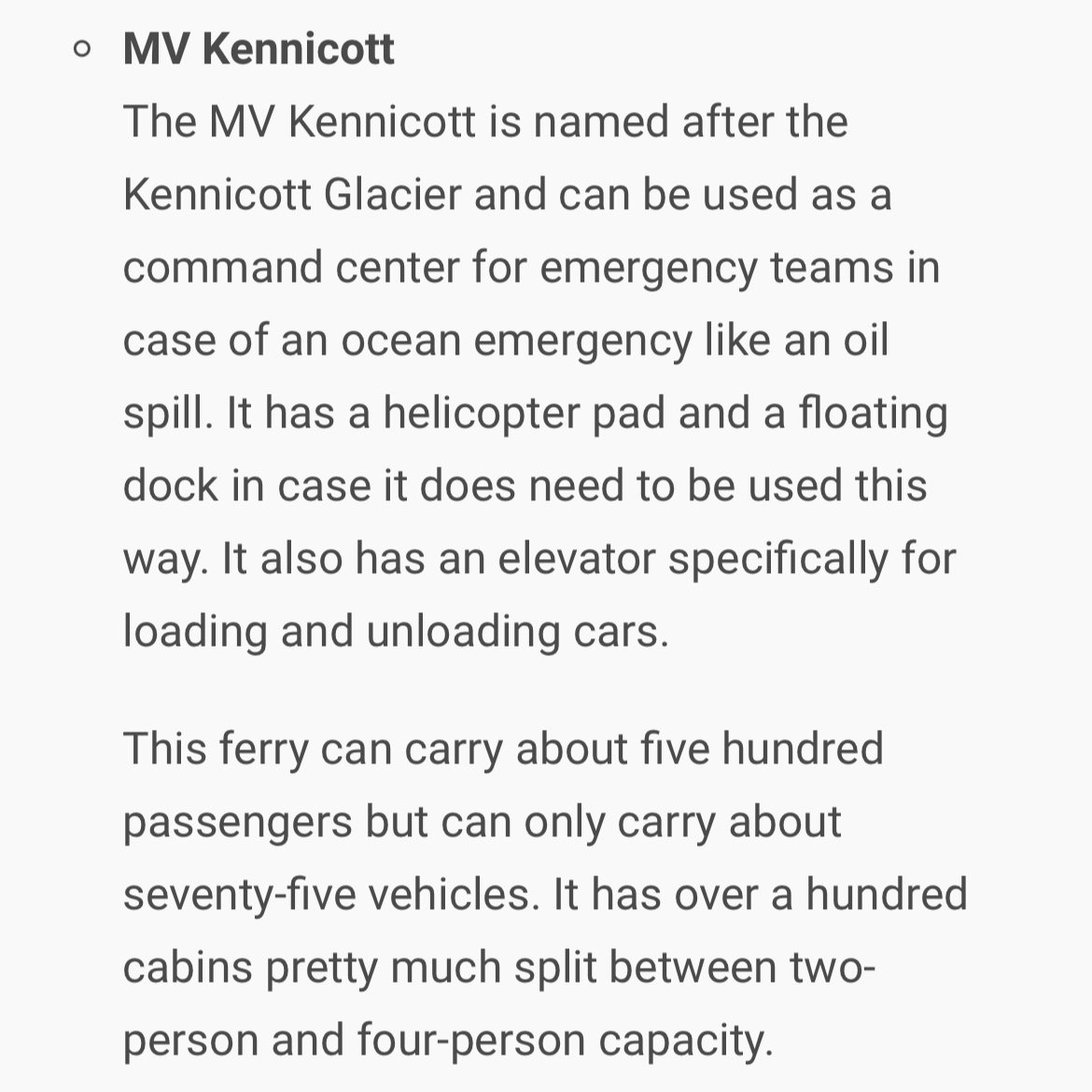
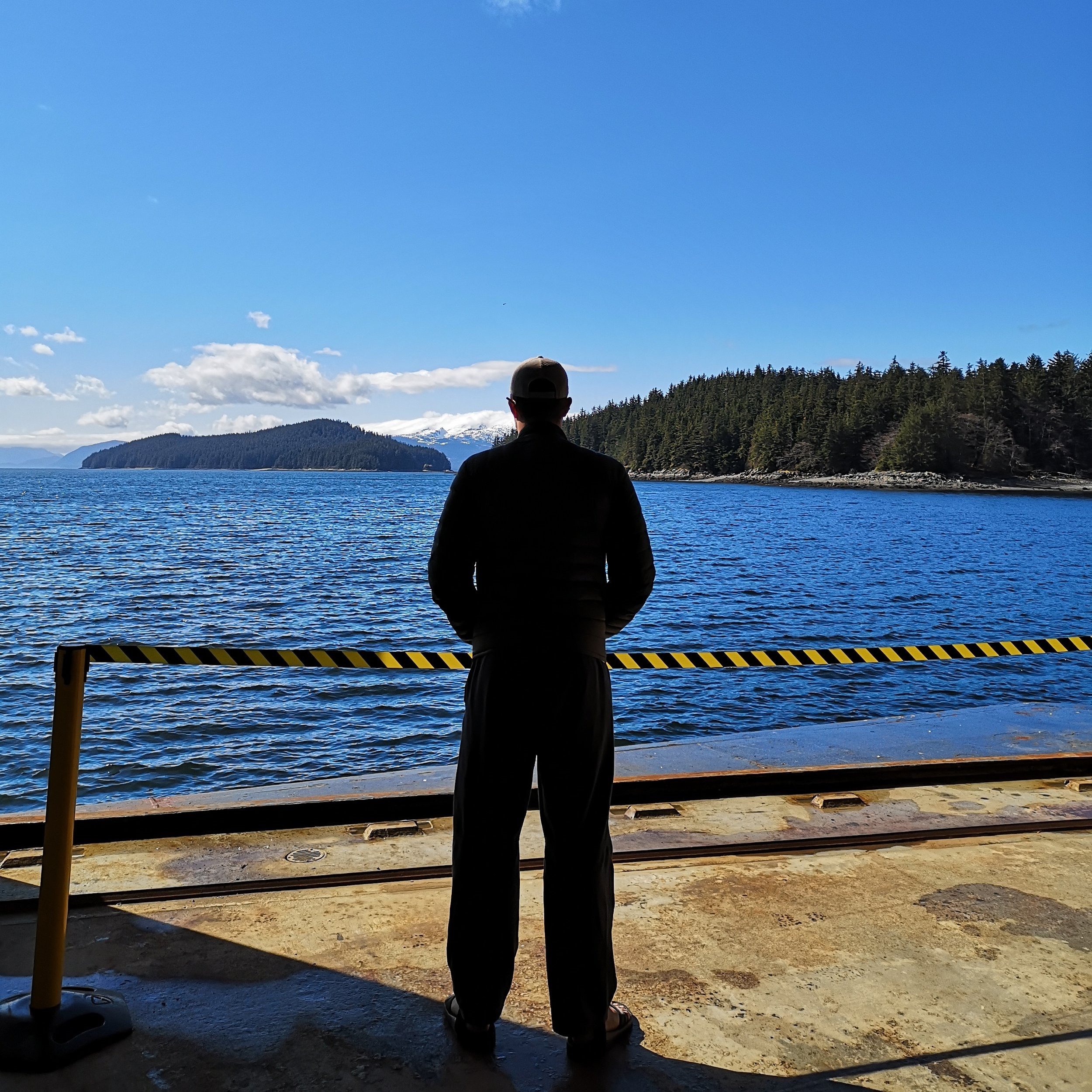

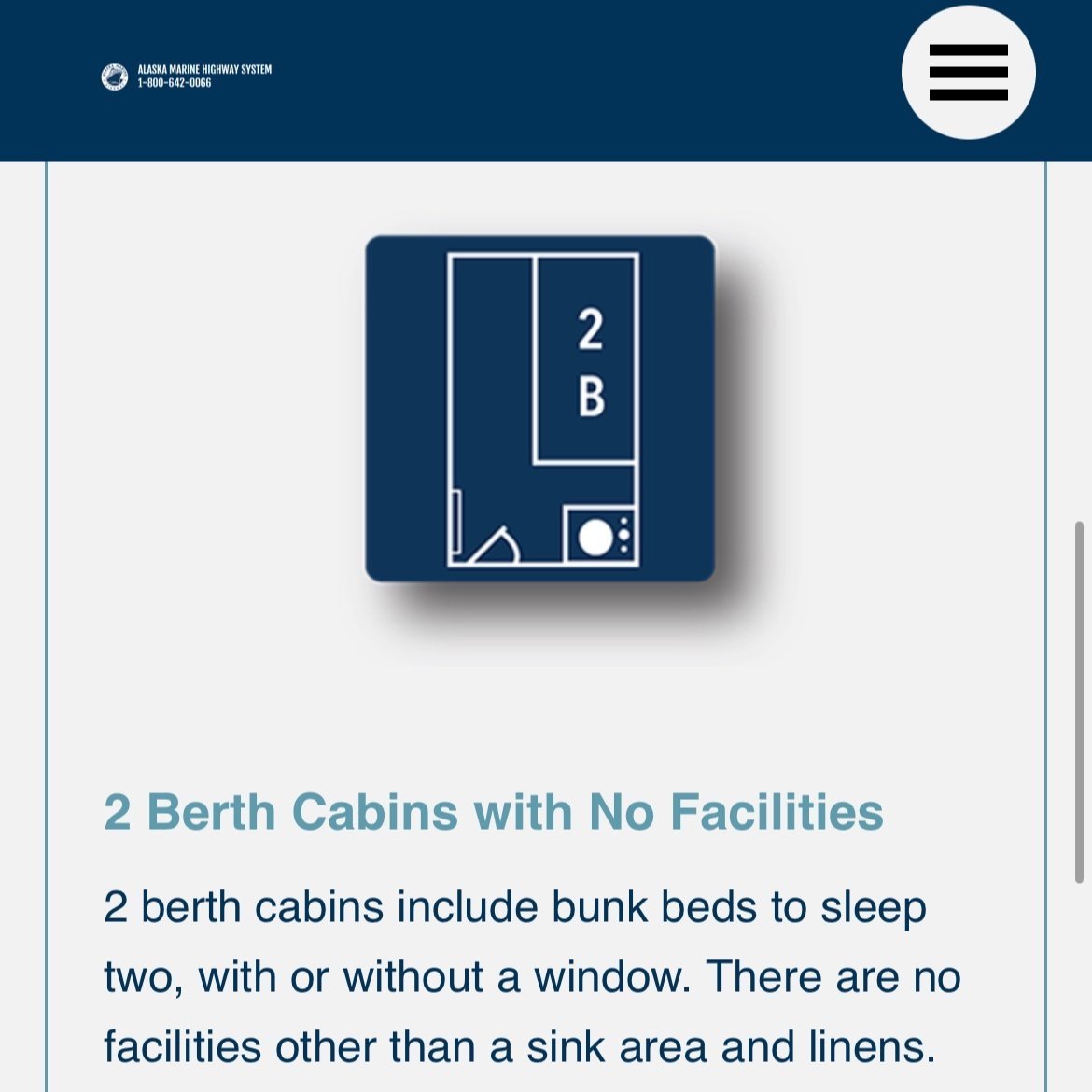
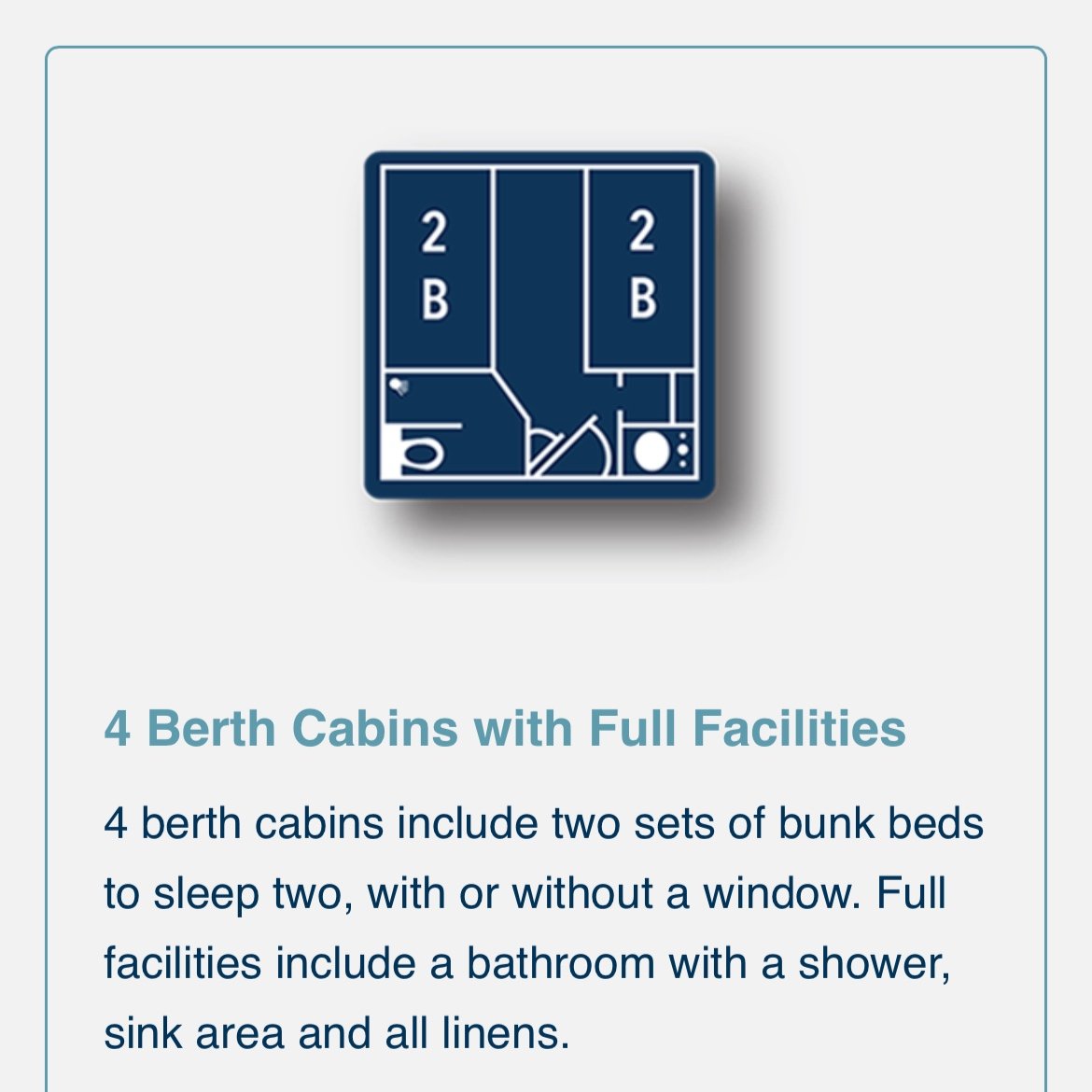
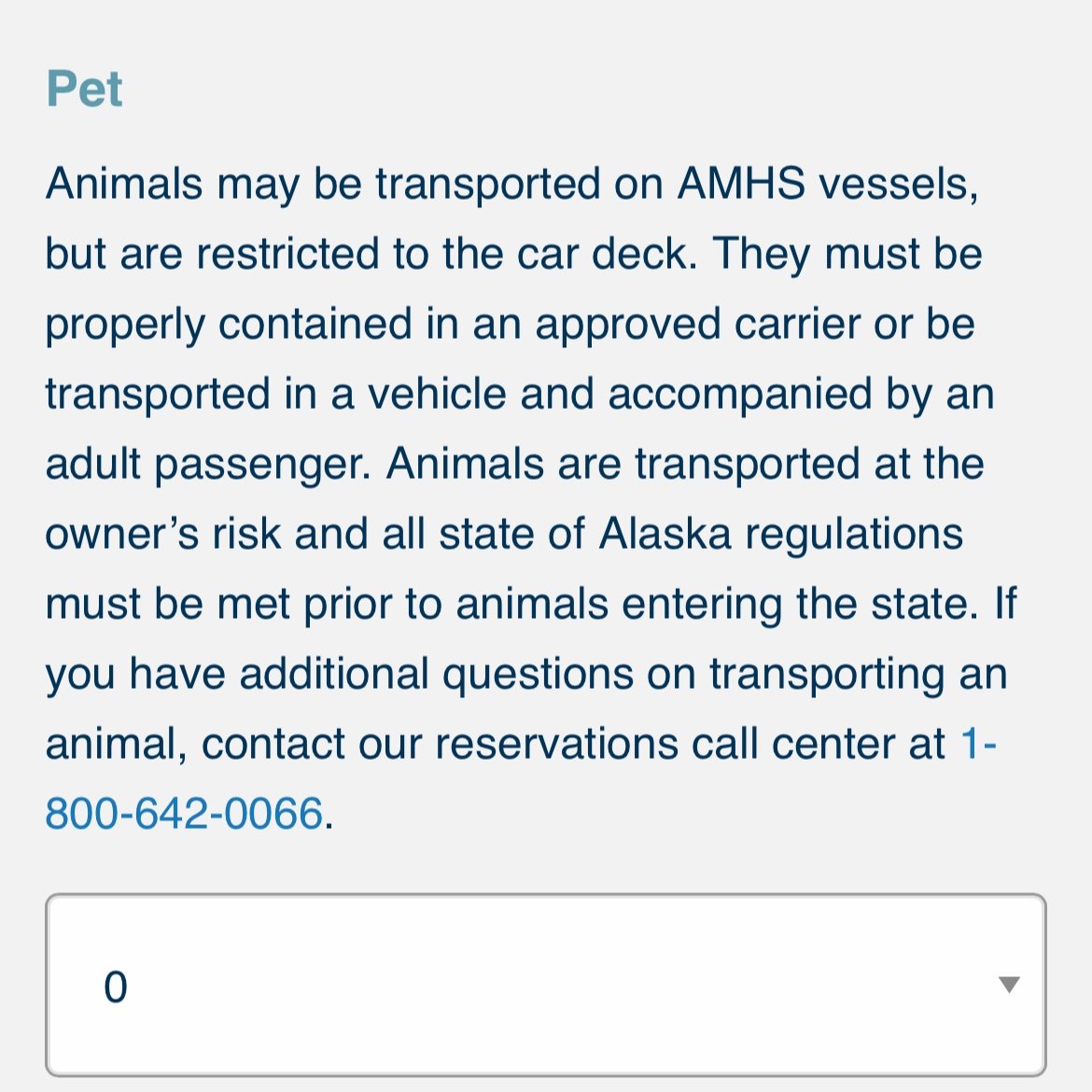

Comments